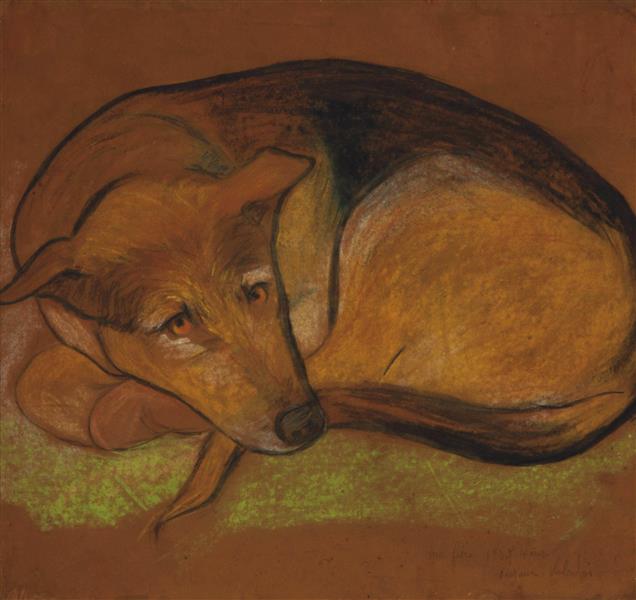Description
The painting "My pride at four years" (1905) by Suzanne Valadon presents an intimate exploration of childhood, a theme that the artist tried with depth and sensitivity. Valadon, who was a pioneer figure in the art of the twentieth century, broke barriers at a time when women faced serious limitations in the creation and recognition of their work. This painting is not only a portrait of his son, but it is also a reflection of his own experience as a mother and artist, a duality that permeates his work.
The composition of painting is remarkable for its simplicity and at the same time its emotional depth. Valadon captures his son, a child who is not only the protagonist of the work, but also motivates an artistic impulse that manifests itself in the attention to detail in his expression and position. The child, with a countenance of pride and vivacity, is wrapped in an environment that seems familiar and somewhat idealized. The choice to portray it standing, erect and with the direct look towards the viewer, denotes innate trust, a frozen moment in the time that highlights the dignity of childhood.
From the point of view of color, the palette used by Valadon in this work is vibrant and vivacious. The rich and saturated tones provide warmth that makes the action look more imminent and real. Blue and yellow are intertwined in a way that brings both light and shadow, which suggests the dual character of childhood: joy and innocence accompanied by a background of vulnerability. The use of primary colors resonates with the naïve vision that childhood can offer from the world, consolidating the idea that the child, in its pride and its essence, is a representation of a world of possibilities.
The back of the work, although less detailed than the central theme, offers a framework that accentuates the child in the foreground. This technique allows attention to be fully concentrated in the child's figure, emphasizing its presence and eliminating distractions. This aesthetic consideration shows Valadon's ability to use space effectively, suggesting without invading and, at the same time, creating a halo of intimacy and connection.
The context of this work is equally significant. Suzanne Valadon, who began his life as a model and became a self-taught artist, was part of a circle of artists that included figures such as Degas and Toulouse-Lautrec, who influenced their style and technique. However, his voice is unique. In "My pride at four years," Valadon shows a female look in an area that often ignored the perspective of women, both in technique and in the subject. This work is erected as a testimony of its personal and artistic evolution, as well as a precursor to the appreciation of family intimacy in modern art.
Valadon's painting, therefore, allows us to reflect on the simplicity of the everyday and the extraordinary that resides in the seemingly ephemeral moments. By capturing his son at this moment of pride, he not only tells the story of a child at four years, but also the story of a mother who observes with love and admiration, transforming a personal experience into a pictorial legacy that dialogues with the spectator over time. This work resonates with the authenticity of human experience, and through it, Valadon is positioned not only as a relevant artist of his time, but as a precursor to a broader vision of the narratives that canvas can inhabit.
KUADROS ©, a famous paint on your wall.
Hand-made oil painting reproductions, with the quality of professional artists and the distinctive seal of KUADROS ©.
Art reproduction service with satisfaction guarantee. If you are not completely satisfied with the replica of your painting, we refund your money 100%.

